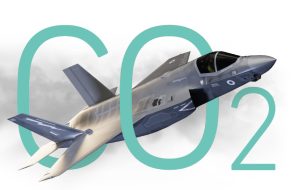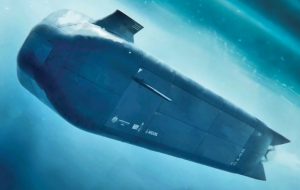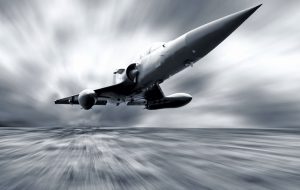In the 2001 film “Enemy at the Gates”, set during the Battle of Stalingrad in World War II, the story revolves around Russian soldier Vasily Zaitsev, a skilled sniper who inflicted heavy losses on the German forces by eliminating many of their commanders. In response, the Germans deployed their top sniper, Major König, to hunt Zaitsev. The film showcases a tense duel between the two, where both snipers attempt to outmanoeuvre each other in a deadly game of cat and mouse.
For many, the word “sniper” conjures unsettling images: a lone gunman, undetectable, waiting for the perfect moment to strike. Military snipers are indeed elite marksmen who hide, select a target through their scopes, and pull the trigger. However, there’s much more to the role. Before firing, a sniper must account for countless variables, including wind speed, wind direction, range, target movement, shadows, light sources, temperature, and atmospheric pressure—this is just the beginning.
A sniper is a highly trained military marksman who engages targets from concealed positions or distances beyond ordinary detection. In modern armies, snipers receive specialised training and are equipped with precision rifles and high-magnification optics. Beyond long-range shooting, they are trained in various special operations techniques: reconnaissance, tracking, range estimation, camouflage, fieldcraft, infiltration, and target acquisition. Snipers often act as reconnaissance operatives, feeding tactical information back to their units or command centres.
Snipers must have complete control over their bodies and senses to remain effective, using a wide array of skills to interpret data within their scope and make precise adjustments to hit distant targets. They are trained with charts that allow them to make last-minute calculations in the field, ensuring they can execute their mission with accuracy and efficiency.

The Evolution of Sniping: Precision from a Distance
The concept of a sniper targeting and eliminating an enemy with a single shot emerged with the development of rifles. However, the modern image of snipers truly took shape at the end of the 19th century, with advancements in smokeless gunpowder technology.
This innovation allowed snipers to fire without revealing their position through gun smoke. Additionally, the introduction of nickel-plated bullets significantly increased speed and accuracy. With the development of telescopic sights in Germany, the role of specialised snipers became established, especially as World War I loomed.
As technology advanced, so did sniping tactics, making snipers deadlier and more capable of hitting targets from ever greater distances. Today, snipers are a critical component of any modern fighting force, but it took time for the military to embrace their importance fully.
One key driver behind the rise of sniping’s effectiveness has been the continual improvement of optical technology.
When World War I broke out in August 1914, new weapons and tactics were urgently needed. Tanks, machine guns, and chemical weapons were among the deadly innovations of the time. Although marksmen and sharpshooters had been deployed in previous wars, the conflict saw the introduction of rifles equipped with telescopic sights, making snipers some of the most feared combatants on the battlefield.
Germany was the first to outfit some of its soldiers with these rifles, allowing them to accurately shoot from extreme distances. While sniper regiments were not a new concept, the addition of long-range scopes gave the German snipers a distinct advantage.
Initially, Allied forces were unaware of this development. When German snipers began taking lives from what seemed like impossible distances, French and British soldiers attributed it to extraordinary marksmanship until they discovered scoped rifles in captured German positions.
In response, the British quickly began adopting similar tactics, but the Germans maintained their edge due to the scale of deployment. German snipers operated largely as individual units, focusing on camouflage and concealment. The main rifles used by snipers at the time included the British Enfield 1914, the German Mauser Gewehr 98, and the American M1903 Springfield.
By 1915, with Germany’s sniper superiority becoming clear, the British established their first official Sniping, Observation, and Scouting School, led by Major Hesketh-Prichard. Though too old to fight directly, Hesketh-Prichard was sent to the Western Front as an eyewitness officer. Horrified by the British forces’ poor preparation against German snipers, he found that it was common for British regiments to lose five men a day to sniper fire. He quickly set about purchasing high-quality telescopic sights from England and began conducting research and trials. By 1915, he had permission to formally begin training British snipers. As sniping became an everyday reality in trench warfare, soldiers on both sides developed countermeasures. One notable technique involved creating a paper or dummy head that soldiers would raise above the trench line to draw sniper fire. Once the enemy sniper shot at the dummy, soldiers would estimate their position based on the bullet holes and direct artillery fire toward the sniper’s location to either eliminate or push back the sniper.
This tactic was developed by the British but was widely used by many countries during the war.
By World War II, advances in weapons technology, including telescopic sights, had dramatically improved. Almost every fighting force recognised the value of snipers, who could precisely eliminate enemies from a distance.
World War II introduced a new breed of soldiers—highly trained snipers who could instil fear and take down targets with minimal ammunition. Although snipers were initially underestimated, their impact on critical battles grew significantly as the war progressed, with some major engagements decided by superior sniper tactics.
In recent years, sniper rifles have evolved once more, with specialised ammunition and advanced optics becoming standard. Modern snipers benefit from laser rangefinders, bipods, high-magnification scopes, and night vision, enabling them to take deadly shots at extreme ranges in even the toughest conditions.
Despite these technological advancements, practice and skill remain the most critical factors in effective sniping. No amount of technology can replace the expertise and experience of a skilled sniper.
Standard: One Shot, One Kill
For decades, snipers have been a dominant force in warfare, instilling fear in their enemies by achieving record kills from distances of up to two miles. Comparing the number of rounds needed, on average to kill one enemy soldier highlights the increasing lethality of snipers. During World War II, an infantry soldier required 25,000 rounds to kill one enemy. In the Korean War, this figure jumped to 50,000.
Infantry rifles such as the M14 and M16, used in the Vietnam War, produced even more misses, with an estimated 200,000 rounds required to eliminate a single enemy soldier. In modern statistics, American infantry forces in the Afghanistan War needed about 250,000 rounds to kill one combatant, while a well-trained sniper needed only 1.3 rounds.
Snipers in wartime engage targets from hidden positions or long distances, executing their missions through two primary objectives. The first is force multiplication, where snipers inflict significant damage through special tactics without direct engagement.
The second is interdiction, where well-trained snipers can cause casualties, disrupt enemy routes, and exhaust the enemy’s resources by requiring disproportionate efforts to counter them.
In battle, the primary task of an infantry battalion’s sniper team is to deliver precise, long-range fire on selected targets. Sniper fire has a profound impact on enemy forces, causing injuries, slowing movement, instilling fear, influencing decisions and actions, lowering morale, and adding confusion to enemy operations.
The sniper team’s observation, navigation skills, and specialised equipment help them monitor terrain and detect changes with precision.
Changing Tactics, Steady Mission
In 1944, the US War Department’s Field Manual defined a sniper as “an expert rifleman, well qualified in observation, whose duty is to select and harass and kill key enemy personnel and leaders who expose themselves. Thus, sniping reduces the enemy’s resistance, movement, and morale.”
This definition remains consistent throughout the broader history of sniping, regardless of whether the weapon used is a crossbow or a high-powered rifle with a telescopic sight.
Different countries apply varying military doctrines regarding snipers, their deployment, and tactics. The primary function of a sniper in modern warfare is to remain concealed at all times and avoid detection. From a distance, they provide detailed observation from a hidden position, and if necessary, reduce the enemy’s combat capability by neutralising high-value targets (particularly officers and key personnel), creating disruption, immobilising, and demoralising the enemy.
Typical sniper missions include managing the intelligence gathered during reconnaissance, identifying targets, providing feedback on the effects of air and artillery strikes, aiding combat forces with precise fire support and anti-sniper tactics, eliminating enemy leaders, selecting opportunity targets, and even destroying military equipment. The sniper’s role has remained consistent throughout history—gathering battlefield intelligence and delivering precise fire on key targets. However, in modern battlefields, sniper teams or cells must adapt to ever-changing operational environments.
Traditional sniper teams consisted of two men—the shooter and the spotter. To address evolving threats and operational conditions, modern sniper teams now operate in formations of four to six men. This allows them to engage in more complex operations with better survivability, covering larger rural and urban environments and maintaining a target for longer periods.
Typically, sniper teams work in pairs, with one member determining the target and calculating wind direction and speed, while the other fires. When a sniper operates alone, they rely on stealth and concealment to complete their mission.
In the modern era, scout snipers typically work in teams of four to eight men, including the shooter, scout, radio operator, and additional forces for security. According to Australian Army sniper instructor Celso Perez, “The qualities needed when selecting a soldier to become a sniper in the Australian Army are intelligence, creativity, and high-level thinking abilities, which are essential for working successfully in a sniper cell.”
He adds that a sniper in the Australian infantry is an adaptable soldier armed with high technical, tactical, and logistical skills to carry out their mission.
Being a sniper is not just about being an excellent marksman, though that is crucial. In operational conditions, a sniper must also overcome various mental challenges, such as sleep deprivation, and maintain discipline throughout the mission. A mental breakdown in the field could jeopardise the mission, and making mistakes due to haste is unacceptable and often fatal while a moment of hyperactivity could just as easily lead to death.

The Future of Sniping
The new era of warfare, as seen in Ukraine and other conflicts, does not place the same emphasis on snipers as in previous wars. Armed drones and advanced technology are capturing the attention of armies at the expense of trained snipers, who are increasingly being replaced by new developments.
The US Marine Corps, a long-time leader in this field, has radically restructured its approach to sniping and reduced its importance. This seems to signal the beginning of a global trend. However, snipers still have their uses and are capable of adapting to new forms of warfare, just as they have done in the past.
To survive the onset of a new age of combat, the methods of snipers must change, even if the objective remains the same.
NATO is attempting to integrate snipers into its missions, but it is not yet clear how effectively the alliance will be able to sustain and adapt sniper use in the new era of warfare. The countries that make up NATO are focusing on the war in Ukraine, which is perhaps the most pivotal testing ground for new tactics and technologies, but has so far seen limited use of sniping.
While NATO primarily operates on a strategic level rather than a tactical one, making it unlikely to play a direct role in enhancing sniping, its member allies can develop sniper programmes within their shared network and objectives. They can also seek innovations and coordinate efforts with other nations.
Many productive interactions between countries are already taking place, including joint training, knowledge exchange, and annual competitions that encourage friendly competition and exceptional training.
It is hoped that this cooperation will expand further and that effective adjustments will be implemented quickly to maximise the potential of snipers in the future.●
» By: Retired Colonel Eng. Khaled Al-Ananzah (Advisor and Trainer in Environmental and Occupational Safety)













